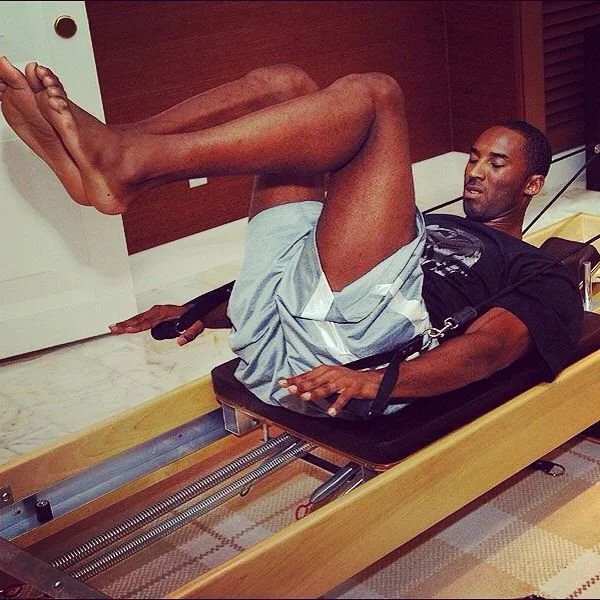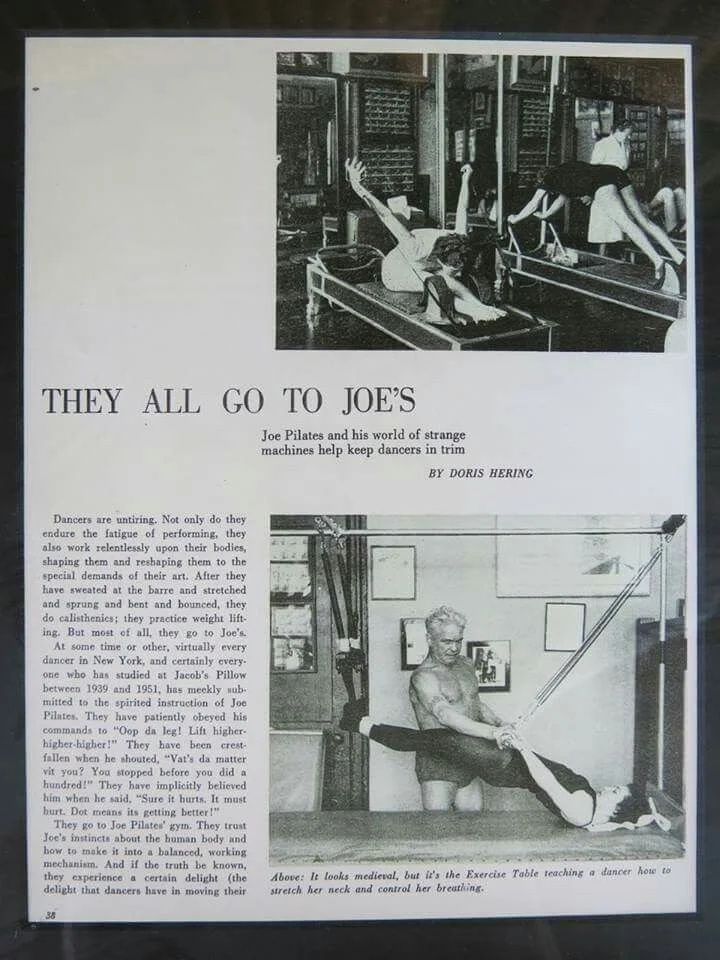pilates & preventing back pain: the timeless practice that keeps the spine young
how Pilates transformed from a wartime rehabilitation method to a timeless practice for spinal strength, posture, and graceful aging.
Kobe knew the power of core training — it kept him strong, balanced, and performing at his best
In a world defined by precision and long hours — whether in the operating room or behind a desk — back pain has become the silent epidemic of modern life. Yet one century-old discipline continues to defy time, blending grace, strength, and mindfulness: Pilates.
The Story of Joseph Pilates: From Internment to Inspiration
Joseph Pilates wasn’t born strong — he built strength through purpose. As a sickly child in Germany, he suffered from asthma and rickets, but refused to accept frailty as his destiny. His lifelong study of anatomy, yoga, gymnastics, and martial arts became the foundation of a revolutionary philosophy: contrology — the complete coordination of body, mind, and spirit.
During World War I, he was interned in a camp on the Isle of Man. There, he began teaching fellow inmates a series of controlled, mindful exercises. Using bed springs and straps as makeshift resistance tools, he developed the early prototypes of what we now know as the Reformer.
His students became stronger, more resilient — even during the influenza pandemic of 1918, none of them reportedly fell ill. Pilates believed it was the power of movement, circulation, and breath that kept them well.
From a Prison Camp to New York City
After the war, Joseph emigrated to New York with his wife, Clara. They opened a small studio near the New York City Ballet — and soon dancers, actors, and athletes flocked to them. Pilates’ method offered something unique: strength without strain, control without rigidity, and movement with purpose.
From that small Manhattan studio, the Pilates method spread globally — transforming rehabilitation, posture training, and the concept of mindful movement.
Why Pilates Is So Effective for Back Health
Pilates isn’t about flexibility alone — it’s about alignment, control, and intelligent strength. For surgeons, professionals, and anyone living a modern, sedentary life, it provides a vital antidote to the stresses placed on the spine.
- Strengthens the deep core: Targets the transversus abdominis, multifidus, and pelvic floor to stabilize the lumbar spine.
- Enhances spinal mobility: Gentle articulation of each vertebra restores natural movement and prevents stiffness.
- Balances muscular tension: Rebalances dominant muscles with underused stabilizers.
- Improves posture and breath: Encourages awareness of alignment and oxygenation — essential for those under constant focus and precision.
The Science Behind the Practice
- A 2019 review in the Journal of Orthopaedic & Sports Physical Therapy found Pilates significantly reduced chronic low back pain and improved daily function.
- A 2021 Frontiers in Psychology study revealed long-term Pilates practice enhances proprioception — your brain’s sense of where the body is in space — improving coordination and spinal stability.
- Clinical studies also show reduced pain perception and improved muscular endurance after just 6–8 weeks of consistent practice.
Timeless Aging Through Movement
Pilates isn’t just a workout — it’s a philosophy of graceful longevity. Each movement nurtures circulation, posture, and core strength, slowing the physical patterns of aging. It helps you move with the quiet strength and balance that defines timeless beauty.
The Icons of Balance
From Audrey Hepburn to Sophia Loren, many icons of elegance embraced disciplined, mindful movement as part of their daily lives. Their secret was not youth — it was vitality through awareness. Pilates helps preserve this vitality, allowing you to feel light, poised, and centered — at any age.
Practical Steps: How to Use Pilates to Prevent Back Pain
- Start with posture awareness. Take a moment each morning to stand tall — feet hip-width apart, shoulders relaxed, spine long. Awareness alone is the first correction.
- Engage your core before you move. Gently draw your lower abdomen inward as if fastening an invisible belt. This supports your spine before any action.
- Move through your spine daily. Practice slow spinal articulation (like Cat-Cow or Pelvic Curl) to keep each vertebra mobile and nourished.
- Balance strength and flexibility. Don’t just stretch — strengthen. Pilates conditions the deep stabilizers that protect the back.
- Breathe with intention. Inhale through the nose, exhale through the mouth, feeling the ribs expand and contract. Breath is the bridge between body and mind.
- Be consistent. Ten mindful minutes daily transform your posture more than an occasional long session. Pilates rewards routine, not perfection.
- Seek expert guidance. A certified Pilates instructor can correct alignment and ensure each movement supports your unique spine health.
The Timeless Invitation
If you’ve spent your life strengthening your mind — it’s time to strengthen the structure that carries it. Pilates is not just about preventing back pain — it’s about living longer, moving gracefully, and staying aligned with yourself.
Begin today:
- Enroll in a local or online Pilates class for beginners or professionals.
- Or simply commit to five mindful minutes of core breathing and spinal movement at the start or end of your workday.
Your back — and your future self — will thank you.
“The art of aging well begins with how we move today.” — Dr. Esmaeili
References
- Wells C, Kolt GS, Bialocerkowski A. Defining Pilates exercise: A systematic review. Complement Ther Med. 2012;20(4):253–262.
- Miyamoto GC et al. Pilates for low back pain: Systematic review and meta-analysis. J Orthop Sports Phys Ther. 2019;49(5):301–318.
- Cruz-Ferreira A et al. Effects of Pilates-based exercise on life satisfaction, physical self-concept, and health status in adult women. Women Health. 2011;51(3):240–255.
- Gildea JE, Schneider ME. Neuroplasticity in Pilates training. Front Psychol. 2021;12:701.
Suggested Pull Quote
“Change happens through movement, and movement heals.” — Joseph Pilates
They all go to Joe’s


